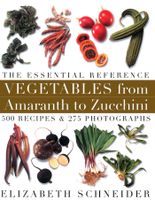Advertisement
Lotus, Lotus “Root”
Nelumbo nucifera

Appears in
Published 2001
Also
Asian lotus ,renkon (Japanese) ,leen ngau (Chinese)
The lovely lotus, native to a wide swath of Asia, is celebrated extensively in the painting, sculpture, religion, and mythology of India, China, and Egypt, as well as the culinary arts of those and other countries. Fresh and dried, whole and ground, the elegant aquatic plant is a generous one, edible from its bulbous base to the very stamen of its pink or white flowers.
Fresh stems, young leaves, and petals are used raw and cooked in Southeast Asia; dried mature leaves become a wrapping for parcels to be steamed or baked— notably the mud-packed beggar’s chicken of China. Seeds are snacked on fresh or sugar-crystallized, ground to a paste to fill confections, or cooked into sweet soup. The tuberous underwater parts are sliced into chawan mushi, a popular Japanese savory egg custard; folded into vegetable patties (kofta), bean dishes (dal), and fritters in India; and soy-glazed in Korea.


